Our last day on the Cape, the road was empty and the conditions easy.
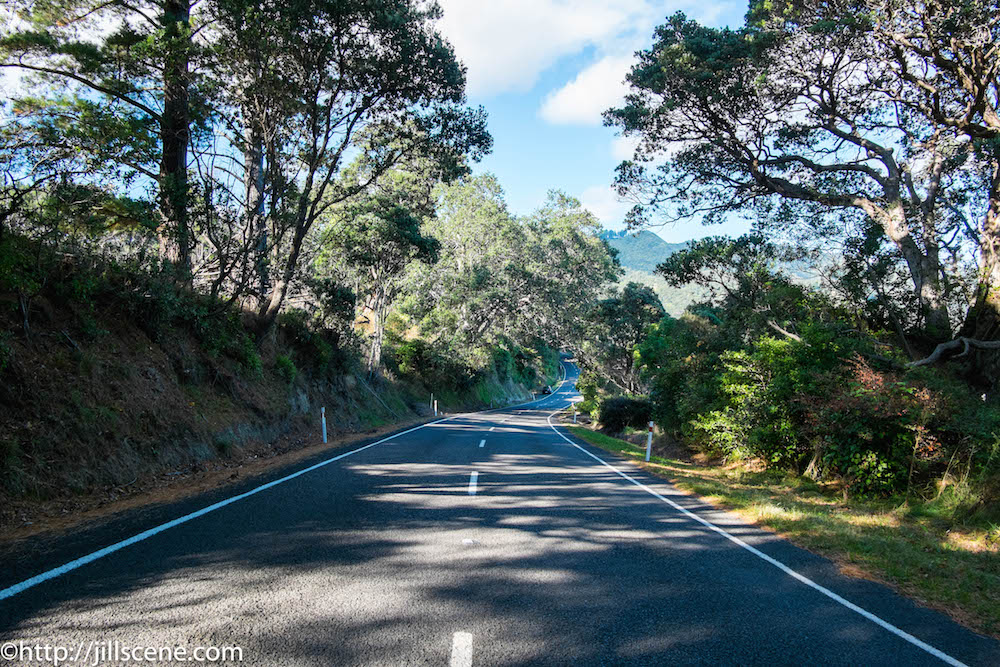
Homeward bound
We stopped often – no surprises there. There were many examples of whare whakairo, traditional carved meeting houses, and pou to admire. If you would like to know more about the art of Maori carving click here.
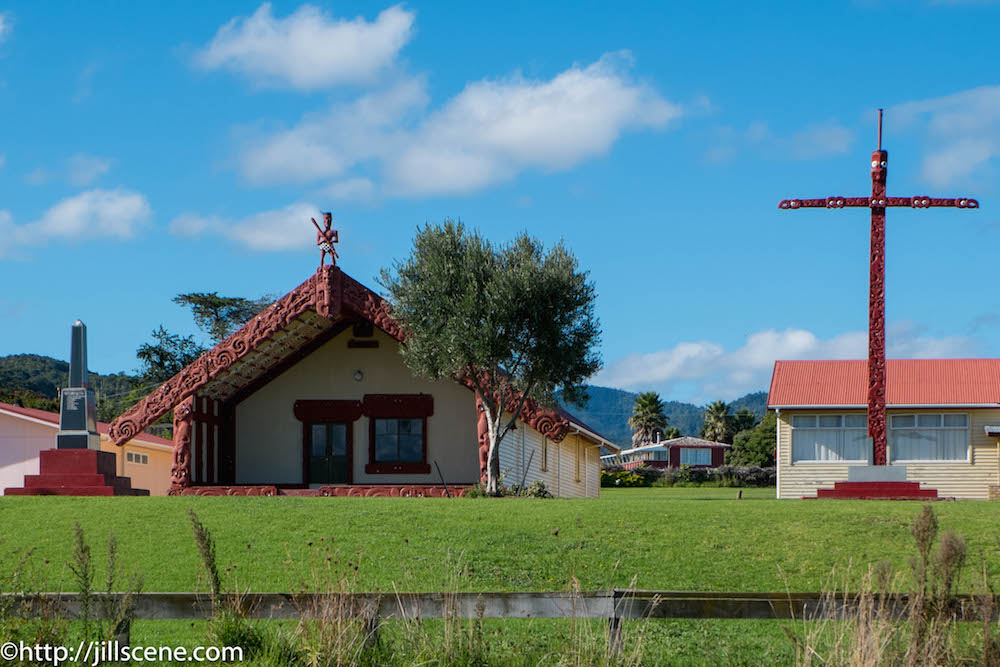
Te Kaha Marae
Of all the East Cape marae, Te Kaha, is one of the most well-known. Technically marae, or meeting place, refers to the open ground in the front of the meeting house (wharenui) but the word is often used to refer to the entire complex itself.
Each wharenui is not only named after an ancestor, in this case Tukaki, (who has links to Kahungunu, the iwi from our region) but its structure represents the body of that ancestor, and is therefore sacred. Wandering on to a marae without an invitation is as much a social affront as walking into a stranger’s house uninvited. Don’t do it.
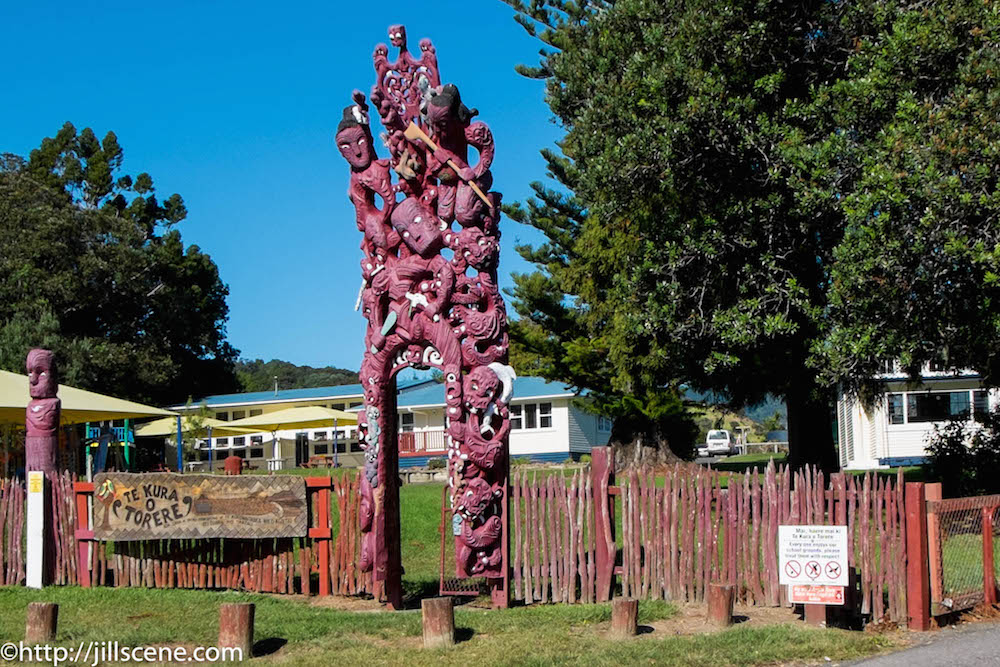
Te Kura O Torere
Sadly, I can’t read the story depicted on this ornate Pou at Torere School. But I’m sure any of the pupils would be able to explain it to me.
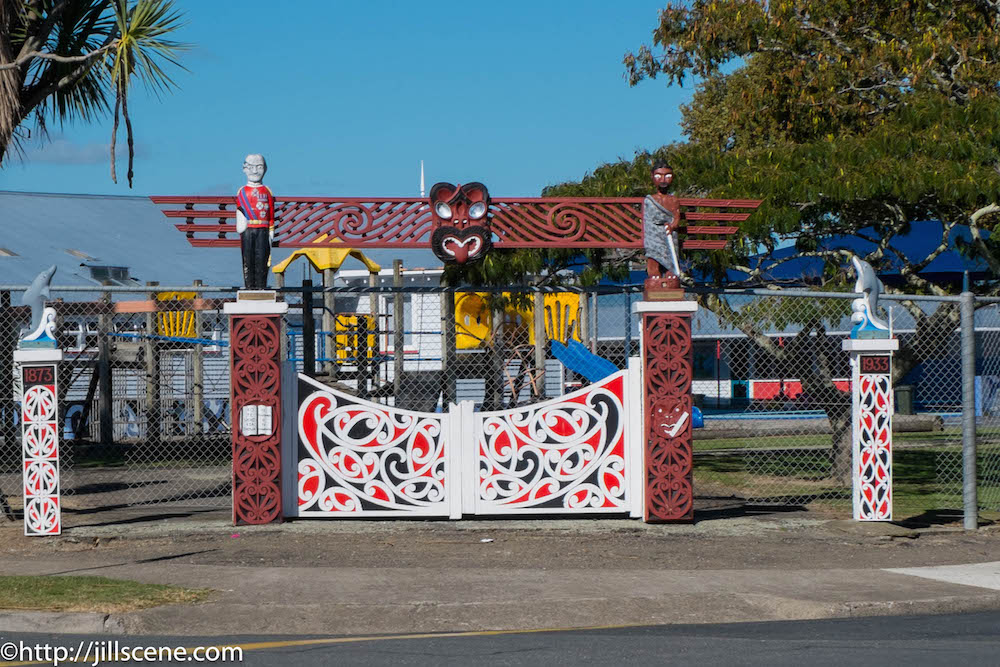
Entrance to Opotiki Primary School
The carvings at Opotiki Primary school were easier for me to interpret.
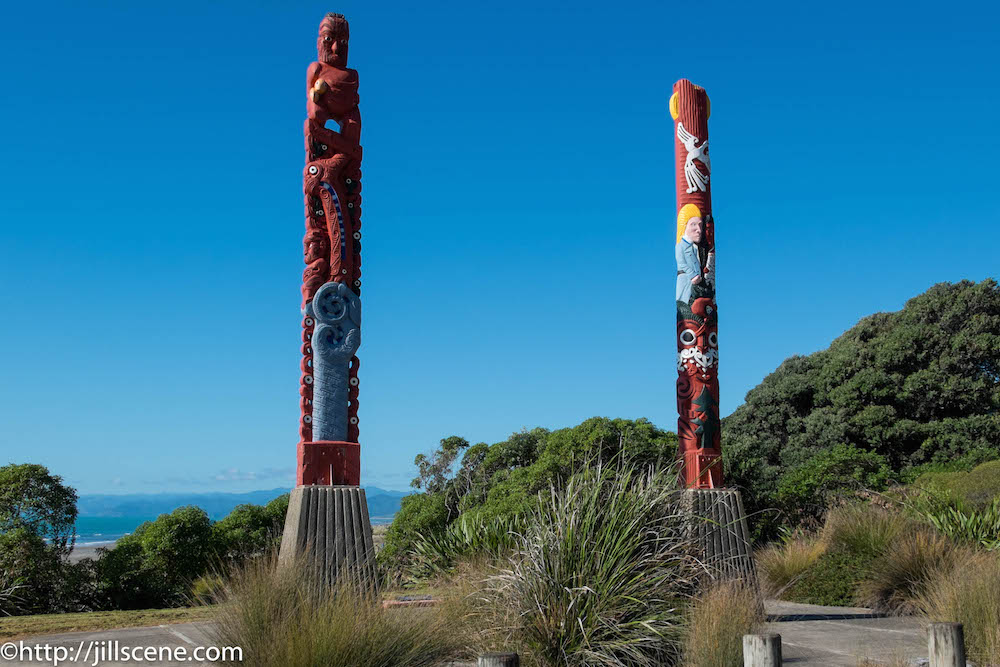
Pou Whenua O Waiotahi
These pouwhenua on Waiotahi beach mark the northern boundary of East Cape and they marked the beginning of the end of our trip around East Cape.
Somewhere amongst the bundles of photos that never made it into albums there’s a photo of me with our two boys, taken twenty years ago, by these pou. It was one of those summers: the days were long, the sun warm, the sea calm. The beach was perfect for us, there was plenty of shade from the pohutakawas and the waves were just big enough to be exhilarating for children learning to body surf.
All these years and not much has changed.
Submitted to Photo101Rehab
And for other interpretations of this weeks travel theme visit Ailsa at Where’s My Backpack.


Good one Jill and thanks for the interesting Maori carving link.
LikeLike
So very glad you enjoyed it, Jack.
LikeLiked by 1 person
Such a pleasure to ‘ride’ through this part of the country with you. Don’t the pou look extra special against that blue, blue sky?
LikeLike
Bluer than blue, that sky, Gallivanta. We were very lucky with the weather, especially towards the end of the trip. Thanks so much for following along.
LikeLiked by 1 person
Your first image draws me in – I love road scenes, always want to be in the car and driving along the road! Thank you for sharing your trip, I hope that I will be able to visit this area one day in the not too distant future, it obviously has a lot of history. And I shall heed your warning about not stepping into the marae.
LikeLike
Hello Heyjude, I hope you do get to road trip the East Cape -I love it up there! I was talking to a colleague recently, who grew up in the area. He said that if you come across local people, they are usually very happy to take the time to answer any questions. Sadly for us, we saw very few people but it was the off-season.
LikeLike
beautiful photos – and it is funny how so many things do not really change – and I could imagine the body surfing lessons and all that back then- to now size up the setting and remember. h’m…
LikeLike
I’m glad you like the photos, Yvette. Ah, the memories …
LikeLiked by 1 person
🙂 ❤
LikeLike
Thanks Jill, you have taken us on a journey to a very special part of NZ. What glorious weather you had. Your descriptions and photos show this corner of the “Long white cloud” to perfection. You have certainly fitted a lot into your 5 days and now it is all over and back to the “daily grind” and dreaming and preparing for the next adventure…
LikeLike
Ah, yes, it is back to the grindstone. But, I know from experience, the best way to beat the post trip blues is to begin planning the next one. And I’m happy to report that the planning is well under way.
LikeLike
Yes always fun to do the planning. Where will you be going?
LikeLike
Fingers crossed for Mynamar, come the spring!
LikeLike
That will be a great adventure. Cathy of “Catbird in China” says it is her favourite place. https://catbirdinthemekong.wordpress.com/2015/06/11/a-gold-leaf-afternoon-a-distant-sighting-of-the-mahamuni-buddha/
LikeLike
Pauline, Thanks for this link, I’m going to enjoy reading Cathy’s blog.
LikeLike
Cathy is a great traveller/adventurer and fits so much into every day.
LikeLiked by 1 person
Reblogged this on Laughter: Carbonated Grace and commented:
@Heather, Ashley, Josh thought you and the children might enjoy this.
LikeLike
going to reblog so my grandchildren can enjoy this also.
LikeLike
Thanks Eileen, and I hope they do!
LikeLike
What a beautiful journey you’ve taken us on. The photos are great – those wood carvings are brilliant aren’t they?
LikeLike
Thanks desleyjane. The carvings are very precious taonga.
LikeLiked by 1 person
The opening photo is such an inviting stretch of road, I want to be in the car. I’ve really enjoyed this trip Jill. Thanks again for sharing the wonderful photos, the information and the reality of a proper road trip 🙂
LikeLike
Isn’t it just, Dan. That’s a stretch of road that makes you feel as if you could drive on and on. So glad you enjoyed the trip.
LikeLiked by 1 person
Love the carvings. Unique to the area, I suppose. Haven’t seen them anywhere else.
LikeLike
Hi there Rusha, I’m not an expert, but I think there are some similarities to the carvings of other South Pacific peoples. However, over the centuries since Maori arrived here the carvings have developed in a particular and distinctive form. Carved wharenui and pou can be found in most part of the country.
LikeLiked by 1 person